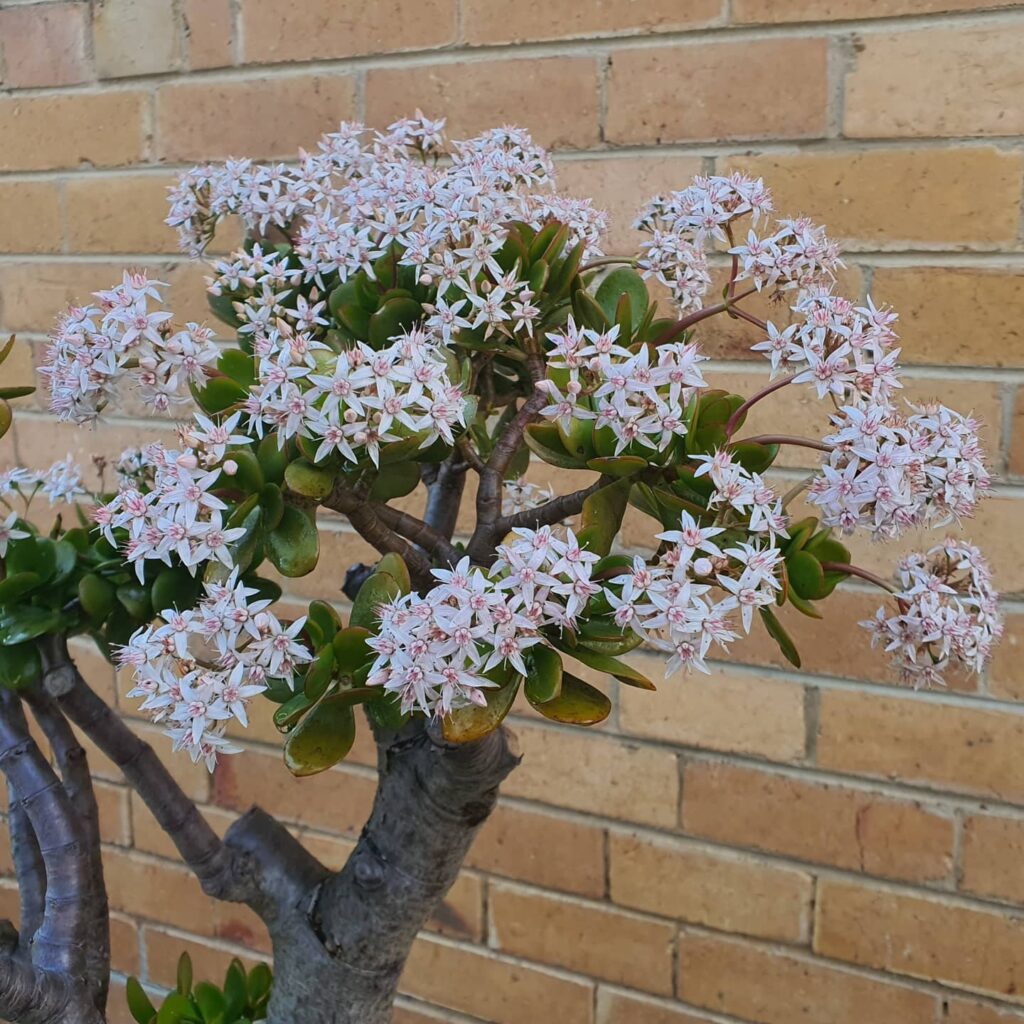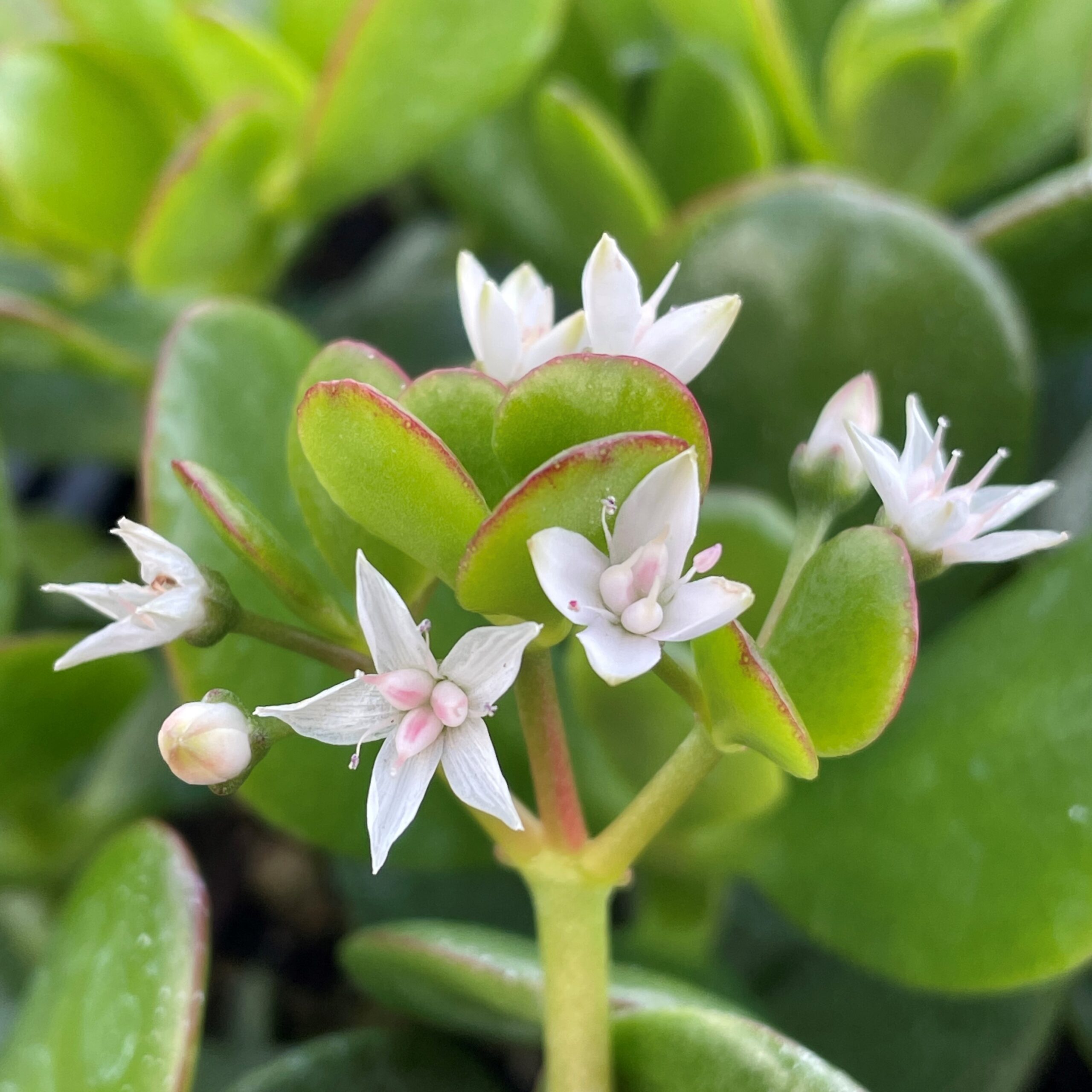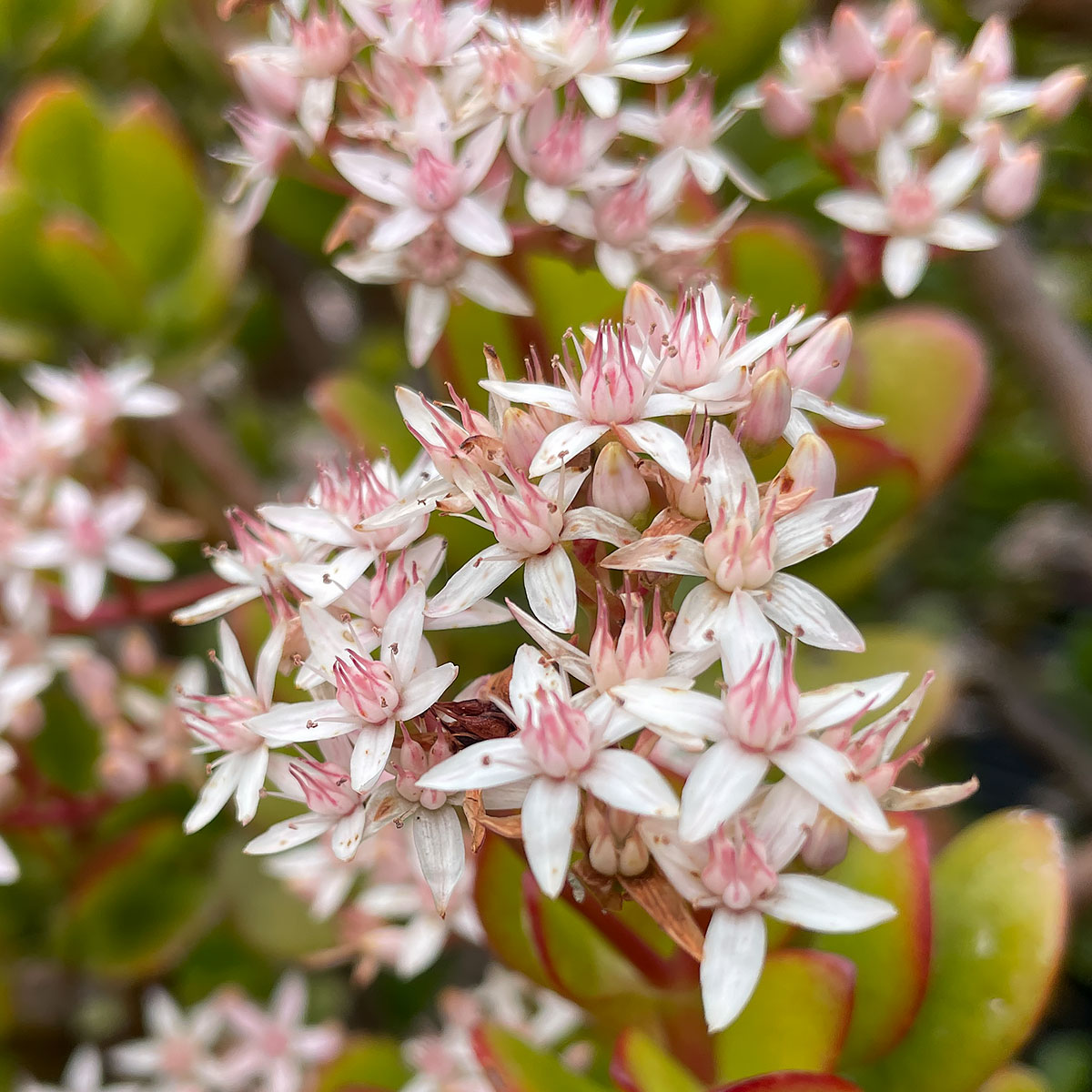Crassula Species (Jade Plants): Your Complete Guide to Thriving Care

The Jade Plant Playbook: Mastering Crassula Species from Novice to Connoisseur
Walk into almost any nursery or office lobby, and odds are high you'll spot a jade plant, its thick, glossy leaves gleaming like tiny green coins. They often get pigeonholed as “easy-care” succulents — but take a closer look and you’ll discover a remarkable blend of resilience, nuanced beauty, and surprising variety hidden beneath those plump leaves.

After nearly 20 years of hands-on experience—collecting, nursing, and even reviving seemingly lost crassulas—I’ve developed a practical system that doesn’t just keep these plants alive but helps you unlock their fullest potential. Whether you’re just starting or ready to break through to advanced cultivation, this guide will walk you through everything.
Ready to become a true Crassula whisperer? Let’s dive in.
Table of Contents
-
Crassula: Beyond the Basics
- What Makes Jade Plants Unique?
- Fast Facts & Anatomy Demystified
-
The Crassula System: Foundations for Success
- How to Pick a Healthy Jade Without Regret
- Soil & Potting Secrets That Save Roots
- Sunlight: The Often-Underestimated Gold Standard
- Watering Hacks People Never Tell You
-
Avoiding Classic Mistakes (Including My Own ‘Oops’ Moments)
-
Level-Up Techniques: Propagation, Pruning & Artistic Display
- Fast Propagation Tricks: Why Leaf Cuttings Fail (or Don’t)
- Shaping Your Crassula: Bonsai & Beyond
- Collecting Rare Varieties & Hybrid Growth Tips
-
Toolkit Essentials for Serious Growers
-
Troubleshooting Like a Pro
-
Action Plan: Your First 90 Days + Long-Term Mastery Map
-
Becoming a Crassula Authority: Sharing & Growing Knowledge
1. Crassula: Beyond the Basics
What Makes Jade Plants Unique?
At first glance, all jade plants might seem like siblings with similar roundish leaves and thick stems—but seasoned growers know better.
For starters:
- Leaf shapes vary wildly—from cupped spoon shapes (C. ovata) to tubular “finger-like” leaves seen in C. ‘Gollum’.
- Stem colors shift from vibrant gray-green to deep reddish hues depending on light exposure and species.
- Flowers differ not just visually but in scent: some emit sweet jasmine-like aromas; others smell subtly spicy or even faintly metallic.
Here’s one personal lesson burned into me back in 2012: I overwatered what I thought was a standard jade—only later discovering it was Crassula marnieriana, which prefers slightly drier soil. That mistake cost me nearly the whole plant.
Let’s quick-scan some essential facts:
| Attribute | Details |
|---|---|
| Origin | South Africa/Mozambique region |
| Lifespan | Can live decades—oldest recorded 70+ years! |
| Growth Rate | Slow indoors—about 2–5 inches per year |
| Symbolism | Prosperity, friendship, good luck |
Anatomy Demystified
When you hold a healthy jade plant, notice how heavy it feels relative to size—a sign it stores lots of water inside those plump leaves (almost like natural water balloons). Young stems start bright and tender green but harden into woody trunks that narrate years of growth.
Pro tip: gently press a leaf—it should bounce back quickly and never stay dented.
2. The Crassula System: Foundations for Success
You won’t find these tips in every care sheet because they require getting your hands dirty—and learning by trial and error (sometimes painful). But stick with me; these shortcuts will save you from disappointment and lost plants.
How to Pick Healthy Jades Without Regret
Your choice at purchase can make or break your jade journey—no joke.
- Check the leaves: Give them a gentle squeeze; they should spring back firmly without dents or mushiness.
- Lift the pot: Light pots with roots poking out drainage holes usually mean it’s ready for repotting soon (good!). But if soil blobs fall apart when tilted sideways? That's often an early red flag of soggy soil or rot.
- Look for new growth at branch tips — vibrant reds or fresh green shoots signal vitality.
If you're craving variety (which always amps the fun), mix contrasting cultivars like:
- Crassula ovata (“classic” rounded leaves)
- Crassula ‘Gollum’ (tubular “finger” shaped leaves)
- Crassula perforata (“string-of-buttons” stacked triangular leaves)
This combo helps you compare care responses firsthand—fast-tracking your learning curve.
Soil & Potting Secrets That Save Roots
Nearly every crassula disaster I’ve seen ties back to root rot caused by poor drainage.

Here’s my battle-tested soil recipe:
- Mix 2 parts commercial cactus/succulent mix + 1 part coarse perlite
- Place about half an inch of clean aquarium gravel at pot bottom before adding soil—this extra layer boosts airflow around roots tremendously.
- Always prefer unglazed terracotta pots—they absorb moisture better than plastic or ceramic ones, almost forgiving mild watering mistakes.
Want an easy test from my mentor Joe (“the Succulent Whisperer”)?
- Water your plant thoroughly.
- Wait about five minutes.
- Tip pot sideways onto your palm—water should drip freely.
- Check soil texture by squeezing it gently; it should crumble loosely instead of turning into mud chunks.
Fail step 3 or 4? Time for potting adjustments!
Sunlight: The Often-Underestimated Gold Standard
No matter how many times I’ve read “bright indirect light,” the actual sun requirements vary wildly here:
-
For indoor jades, positioning within two feet of an east-facing window offers balanced morning sun with less scorching heat.
-
South-facing windows? Use sheer curtains during peak midday hours if leaf tips brown easily—that simple shade prevents painful sunburn yet still delivers plenty of energy.
-
Outdoor acclimation demands patience — moving directly outdoors on warm days sounds tempting but often backfires in crispy leaf edges. Instead:
- Start with two hours morning sun on day one,
- Gradually increase daily over at least a week,
- Only move permanently outside after consistent night temps stay above 55°F/13°C.
Dark winter rooms don’t scare me anymore thanks to full-spectrum LED grow lights like Sansi or Barrina bars ($30–$60). Within weeks switching my winter stash saw noticeably deeper greens and fuller leaves—not just pale shadows pretending to live!
Watering Hacks People Never Tell You
Everyone says “let soil dry out” but what does that really mean?
Forget vague timelines; use this simple pinky-finger test:
Stick your clean pinky beside the stem about two inches deep:
- If it feels totally dry AND cool to touch → water deeply until water runs from drainage holes.
- If soil is only slightly damp or warm → hold off watering; check again in several days.
Summer heatwaves push watering frequency higher (~every two weeks). Winter months might stretch intervals past six weeks—and yet my jade remains plump and happy despite desert-dry air indoors!
Leaves puckering lightly? Fine if firmness remains—floppy wrinkled? Time for emergency soaking using tray method (see Troubleshooting).
3. Avoiding Classic Mistakes (Including My Own ‘Oops’ Moments)
Nobody taught me all this up front—and believe me, I made plenty of mistakes!
Overwatering Disaster #1:
Once I coddled a variegated jade all winter “just in case,” overwatering out of nervousness… Result? Brown mush and stem rot by February—a heartbreaking loss avoided only after brutal pruning saved one branch.
Lesson learned: underwatering is friendlier than drowning!
Sunshine Shock #2:
Moved my oldest jade outdoors without proper shading during scorching June… immediate crispy brown burn scars on upper leaves! Now I introduce sun gradually using shade cloths or even paper bags covering tender branches before exposing fully.
Pest Surprise #3:
Missed subtle mealybug colonies hiding under lower stems until sticky honeydew stained shelves below (oops!). Now monthly pest checks via magnifying glass are standard; quarantining newbies for 10–14 days protects established collections well.

4. Level-Up Techniques: Propagation, Pruning & Artistic Display
Okay—you’ve got basic care down, now let’s talk about multiplying your jades and shaping them into living sculptures that wow visitors—and yourself!
Fast Propagation Tricks: Why Leaf Cuttings Fail (or Don’t)
Most people try burying leaf bases upright—big mistake because trapped moisture causes rot… So here’s what works better:
- Lay freshly plucked jade leaves flat on barely moist succulent mix.
- Cover tray loosely with plastic wrap punched with tiny air holes to create humid “greenhouse.”
- Keep temperature warm (~65–75°F); wait approximately two to four weeks before roots appear.
Patience is key! It can feel slow watching fragile roots emerge…
As for stem cuttings:
Always let cut ends callus fully at least five days before planting—dry-looking after three days does NOT mean ready yet! Applying this rule caused my success rate jump from about 20% propagation survival all the way up toward consistent 90%.
Offsets/pups are your jackpot jackpot:
Gently wiggle sides until they pop free without force; if stubborn—that’s okay! Wait another week for natural separation rather than risk damage. Separate pots usually root within few days once detached properly.
Shaping Your Crassula: Bonsai & Beyond
Want that ancient tree vibe on your shelf?
Gradual shaping wins over drastic hacking every time:
- Snip just above leaf nodes with sterilized bonsai scissors — less trauma prompts healthier regrowth cycles.
- Avoid removing more than one-fifth (20%) foliage per pruning session; big cuts cause stress/premature dormancy.
- For thicker trunk bases ("bonsai flare"), reduce watering right after pruning sessions—that trick tightens bark growth while slowing upward stretch (learned this directly from expert local growers).
Playing around with wiring branches carefully also lets you train shapes over many months—but be sure wires aren’t cutting into tender bark mixed with new growth bursts!
Collecting Rare Varieties & Hybrid Growth Tips
Collecting rare crassulas isn’t just addictive—it’s practically its own adventure sport!
A few insider tips:
-
Buy from reputable sellers who share clear cultivar names + mother plant photos clearly labeled—that transparency saves headaches multiplying mislabeled plants later.
-
Hobbyist hybridizing takes patience:
- Use soft paintbrush dusted lightly with pollen from male flowers brushing onto female stigmas early mornings when dew is most receptive.
- Expect low germination (<25%), so cross many flowers patiently!
- Document every attempt meticulously—the weird survivors often surprise you with unique leaf patterns or colors otherwise unavailable commercially.
5. Toolkit Essentials for Serious Growers
My desert-island gear list for thriving jades includes:
| Tool | Why It Matters | Notes |
|---|---|---|
| Terracotta Pots | Great drainage + moisture control | Start small; upgrade slowly |
| Cactus Mix + Perlite | Fast draining custom medium | Prepare fresh batches monthly |
| Precision Shears | Clean cuts reduce infection risk | Alcohol wipe between uses |
| Moisture Meter | Backup watering check | Use sparingly alongside finger test |
| Full Spectrum LED Grow Light | Keeps plants happy indoors | Purple-only LEDs less effective |
| Soft Makeup Brush | Pest dust removal w/o damage | Good alternative if no commercial brush |
Bonus tip from fellow collector Mark? Label ALL your plants clearly—from masking tape labels dated + cultivar name—to avoid confusion once collection grows exponentially!
6. Troubleshooting Like a Pro
Common issues happen even if you’re careful—but fixable fast once recognized:

Wrinkled Leaves: Signs of underwatering OR root damage from old rot episodes?
Fix: Try soak-pot absorption method—place entire pot in shallow tray filled with water so soil wicks moisture gradually over hours without flooding roots unevenly where rot starters hide most.
Yellow Leaves: Natural aging OR beginning signs of root issues?
Fix: Gently unpot plant; inspect roots carefully before adjusting care drastically! Yellow leaves near base might shed as normal cycle end-of-life spots—but sudden widespread yellowish tint demands action ASAP.
Sudden Drop-Offs Post Repotting: Usually stress-related unless stems turn mushy/soft suddenly—then suspect root damage during transplant process.
Fix: Hold off fertilizing minimum three weeks post-repotting; keep light moderate—not harsh direct sun—for first month till recovery solidifies.
Mealybugs/Spider Mites Detected?: These pests love hanging out under dense lower branches unnoticed!
Fix: Dab affected areas vigorously with rubbing alcohol swabs plus repeat weekly insecticidal sprays combined with isolation protocol at least three full treatment cycles minimum—not just one-off dabbing!
Hard problems sometimes call for creative solutions — don’t hesitate reaching out online or via local clubs if stuck!
7. Action Plan — Your First 90 Days + Long-Term Mastery Map
Use this road map as a confidence-builder each step forward—the clearer goals lead to fewer lost nights wondering if your cutting will survive…
Day One:
Scout for species combos offering visual contrast/unique shapes; inspect each candidate closely pre-purchase; quarantine new arrivals separately minimum two weeks.*
(Note to self: quarantine = eliminating pest spread risks)
Week One:
Repot selected jades into custom soil/gravel blend inside terracotta pots; photo record starting conditions including close shots of stems/leaves—trust me, future-you will thank present-you when tracking progress.*
Weeks Two through Four:
Position near best natural light spots available indoors; begin conservative watering following finger test routine only after confirming dryness twice consecutively; observe daily changes carefully noting any subtle color shifts wilting/wrinkling.*
Month Two*:
Attempt simple propagation steps simultaneously on two methods—a leaf cutting flat-laid and/or offsets potted singly—even minor experiments build skill rapidly.*

Join online forums/local meetups.* Sharing successes/failures turbocharges learning curves.*
Month Three*:
Start light pruning judiciously post-acclimation once solid new growth emerges.* Try installing LED grow lights as supplemental support if afternoons cast shadows.*
Long term*:
Create quarterly photo journals capturing trips ups/down—including label updates when adding new cultivars.* Every six months explore display upgrades like bonsai shaping/root trims/multi-pot collector stand ideas.*
8. Becoming a Crassula Authority: Sharing & Growing Knowledge
Mastery isn’t about memorizing endless commands—it’s pattern recognition born from genuine curiosity + honest records documenting what worked…and what bombed spectacularly!
After hundreds of trials fueled by stubbornness and genuine appreciation (and more than some frustration!), experts differ mainly by embracing mistakes openly rather than fearing them:
Some favorite resources across journey included Debra Lee Baldwin’s elegant books,* obscure academic drought-adaptation articles,* and regional grower workshops.* Each brought fresh insights impossible from one source alone.*
Try crossing cultivars yourself using simple paintbrush pollination methods—even failed seed harvests teach critical learnings around flower timing/care demands rarely explained elsewhere.*
Above all else—share YOUR stories.* Be generous with what helped vs what tanked because real mastery blooms collective community strength much bigger than solo struggles.*
Life With Jade Plants Is Never Boring
Each new flash of red-edged growth after pruning… each offset breaking soil barriers… reminds us mastery evolves constantly—not static like rigid rules written down somewhere dusty and forgotten.
Bookmark this playbook as your ongoing reference manual—and soon enough those newbie questions coming your way will remind you how far you’ve grown alongside these resilient beauties!
Keep experimenting wildly, keep journaling honestly—and most importantly keep growing—not just plants but genuine passion poured deeply into every thick-leaved chapter ahead.
You’ve now got not only practical wisdom soaked in years but little secrets no quick guide dares reveal openly—all bundled here for YOUR Crassula journey starting right now.
Happy growing!



